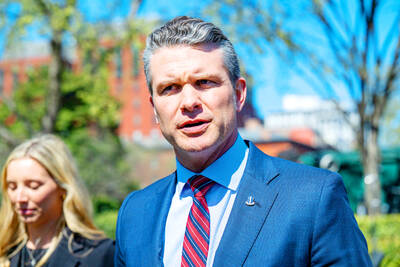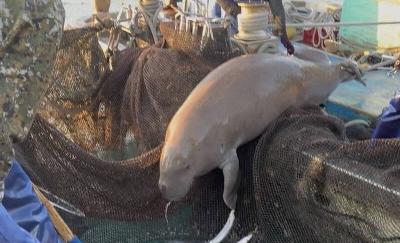It could be said that Taiwan's industrial development mirrors that of Western countries in the late 19th and early 20th centuries. Infrastructure construction and industrial output have taken priority over land conservation, air quality, drinking water quality, waste management, energy consumption, environmental and even cultural preservation.
In recent years, floods, landslides and other natural disasters have demonstrated that the nation is approaching a critical point in its industrial development. What Taiwan needs now is new approaches to development which ensure that cities and towns -- home to most of the Taiwanese population -- can develop in a sustainable way.
Good examples of sustainable development can be found in Europe. Nowadays, more than 80 percent of Europeans live in urban areas, far higher than the global average of 60 percent. Since the Club of Rome, a German-based non-governmental organization (NGO), initiated discussion about the limits to growth in 1972, Europeans have been thinking about what sustainable development in urban areas might look like.
Some Taiwanese officials believe that Germany, which upholds the protection of essential natural resources under its Basic Law, is a good example for the future of urban development in Taiwan.
When Council for Cultural Affairs Chairman Chen Chi-nan (
Chen said that one of the major focuses of the bilateral cultural exchange should be architecture.
Chen said that Berlin's old buildings serve as an inspiration to him.
"We are interested in inviting German architects to Taiwan to offer their ideas about the preservation of historical buildings," he said at a press conference in Berlin last month. Chen also met people in German cultural circles.
Berlin's urban development department was tasked with taking up the reconstruction challenges that arose after reunification.
By 1999, 40 urban development projects had began with government funding. After that, under the Urban II program, 21 million euros were made available for development projects between 2000 and this year.
From the viewpoint of sustainability, it is crucial to assess development holistically. Urban development in Berlin is an interplay of social, economic and ecological factors. The dramatic changes Berlin has undergone since the fall of the Berlin Wall have helped give rise to sustainable development ideas, officials said. Meanwhile, the ongoing renewal of the railway routes has also created the preconditions for environment-friendly mass transportation.
"Modernization in architecture is no longer appealing. Multi-functional communities are what we planned for when zoning the new `Berlin,'" said Cornelia Poczka, head of International Affairs Protocol of the Senate Department for Urban Development. "Old ideas about blurring the distinctions between residential and business areas are making a comeback in Europe."
While showing Chen miniature models of communities in Berlin, Poczka said that cultural preservation was also considered when connecting several communities into an integrated zone. Preserving and protecting historical buildings and bringing them back to life saves materials and energy while avoiding excessive waste, he said.
The so-called "new Berlin" also meshes well with the natural environment. Walking in the city, huge water pipes can be seen everywhere. Officials said that's because Berlin was built on wetlands, and groundwater levels could lead to flooding without the pipes.
"With a network composed of huge water pipes, levels of groundwater can be adjusted. It's common in Berlin that you launch new construction and expose sources of groundwater. The problems are also common in old buildings, whose ground floor is sometimes inundated by groundwater," Poczka said.
As much as 6.6 percent of the city's land mass is covered by water.
A total of 650km of rivers, canals and aqueducts flow through the city.
Berlin has taken its drinking water from surrounding groundwater for more than 100 years. This makes Berlin one of the few large cities that draws its water supply from its own area.
Sustainable management not only applies to the water volume, but also to the water quality and the conservation of this resource.
Appropriate management of Berlin's rivers and other natural resources make it possible for people to enjoy the city's vast green spaces. More than 43 percent of the city's urban area is designated as green space or water areas. Last year, the city boasted a total of 37 nature reserves, 51 conservation areas, 20 protected landscape areas and 682 natural monuments. In other words, 15.3 percent of Berlin enjoys protected status.
Adrian von Buttlar, Technical University Berlin professor, said that innovative conservation methods were used in the city's reconstruction. Construction of new buildings and the arrangement of communities with different functions were carefully considered.
Shieh said that the German people's efforts in preserving their beautiful landscape deserves Taiwan's attention.
Many German social organizations advocate the idea the human interaction with the environment should be sustainable and can contribute to society in a positive way.
"Cultural exchanges between Taiwan and Germany should be a top priority, especially in the area of sustainability," Shieh said. "Innovative ideas ensuring sustainability are actually rooted in culture."
Chen and Shieh are now working together on the establishment of a Taiwan-Germany Cultural Award, which would encourage German research into Taiwan's culture, history, and society.

‘DENIAL DEFENSE’: The US would increase its military presence with uncrewed ships, and submarines, while boosting defense in the Indo-Pacific, a Pete Hegseth memo said The US is reorienting its military strategy to focus primarily on deterring a potential Chinese invasion of Taiwan, a memo signed by US Secretary of Defense Pete Hegseth showed. The memo also called on Taiwan to increase its defense spending. The document, known as the “Interim National Defense Strategic Guidance,” was distributed this month and detailed the national defense plans of US President Donald Trump’s administration, an article in the Washington Post said on Saturday. It outlines how the US can prepare for a potential war with China and defend itself from threats in the “near abroad,” including Greenland and the Panama

A wild live dugong was found in Taiwan for the first time in 88 years, after it was accidentally caught by a fisher’s net on Tuesday in Yilan County’s Fenniaolin (粉鳥林). This is the first sighting of the species in Taiwan since 1937, having already been considered “extinct” in the country and considered as “vulnerable” by the International Union for Conservation of Nature. A fisher surnamed Chen (陳) went to Fenniaolin to collect the fish in his netting, but instead caught a 3m long, 500kg dugong. The fisher released the animal back into the wild, not realizing it was an endangered species at

The Chinese Nationalist Party (KMT) is maintaining close ties with Beijing, the Democratic Progressive Party (DPP) said yesterday, hours after a new round of Chinese military drills in the Taiwan Strait began. Political parties in a democracy have a responsibility to be loyal to the nation and defend its sovereignty, DPP spokesman Justin Wu (吳崢) told a news conference in Taipei. His comments came hours after Beijing announced via Chinese state media that the Chinese People’s Liberation Army’s Eastern Theater Command was holding large-scale drills simulating a multi-pronged attack on Taiwan. Contrary to the KMT’s claims that it is staunchly anti-communist, KMT Deputy

The High Prosecutors’ Office yesterday withdrew an appeal against the acquittal of a former bank manager 22 years after his death, marking Taiwan’s first instance of prosecutors rendering posthumous justice to a wrongfully convicted defendant. Chu Ching-en (諸慶恩) — formerly a manager at the Taipei branch of BNP Paribas — was in 1999 accused by Weng Mao-chung (翁茂鍾), then-president of Chia Her Industrial Co, of forging a request for a fixed deposit of US$10 million by I-Hwa Industrial Co, a subsidiary of Chia Her, which was used as collateral. Chu was ruled not guilty in the first trial, but was found guilty